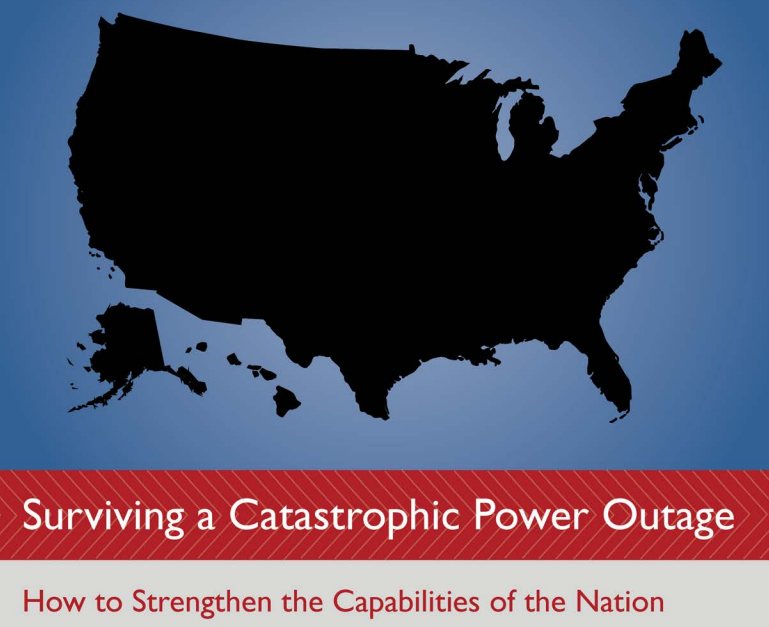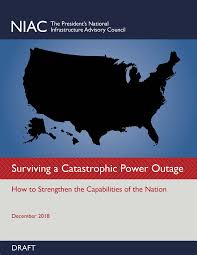
Here are some excerpts from the National Infrastructure Advisory Council published December 2018. Click the link below for the full Final report. READ IT!
*****
“The President’s National Infrastructure Advisory Council (NIAC) was tasked to examine the nation’s ability to respond to and recover from a catastrophic power outage of a magnitude beyond modern experience, exceeding prior events in severity, scale, duration, and consequence. Simply put, how can the nation best prepare for and recover from a catastrophic power outage, regardless of the cause?
This profound risk requires a new national focus. Significant public and private action is needed to prepare for and recover from a catastrophic outage that could leave the large parts of the nation without power for weeks or months, and cause service failures in other sectors— including water and wastewater, communications, transportation, healthcare, and financial services—that are critical to public health and safety and our national and economic security.
Develop and conduct outreach and training for businesses and individuals to build a culture of preparedness at the individual and household level. Community enclaves are predicated on the idea that the majority of U.S. citizens are prepared and able to safely shelter in place for extended time periods.
Supporting Findings
Given the growing frequency and severity of disasters and other risks, there needs to be an increase in individual accountability, enterprise, and community investment in resilient infrastructure.
– There is a misconception that events occur infrequently.
– There needs to be more individual accountability for preparedness.
- Resilience at the state and local level will be critical to enable people to shelter in place and facilitate faster recovery. Any event that requires a mass evacuation will use up critical resources, clog transportation pathways, and reduce the workforce necessary for infrastructure recovery.
- Electricity, fuel, clean drinking water, wastewater services, food/refrigeration, emergency medical services, communications capabilities, and some access to financial services have been identified as critical lifeline services that would be needed to sustain local communities and prevent mass migration.
- Any efforts at the community level need to include input from SLTT governments, NGOs, critical services providers, and community leaders.- People default to trusted leaders and institutions (e.g.,local government officers, faith-based centers, schools, civic organizations) in their community.
- Rather than building new infrastructure, existing community infrastructure (e.g., a school, a mall, or an indoor stadium) could be upgraded using agreed upon resilience standards (i.e., fuel, power, communications, etc.), thus creating local resilience centers quicker and at less cost than building new ones.
This level of planning and coordination will require a massive,i interconnected analysis of the interdependencies, state processes, and maximum capacities for fuel storage.
- People no longer keep enough essentials within their homes, reducing their ability to sustain themselves during an extended, prolonged outage. We need to improve individual preparedness.
- Most preparedness campaigns call for citizens to be prepared for 72 hours in an emergency, but the new emerging standard is 14 days.
For example, Washington, Oregon, and Hawaii have a standard that individuals have enough food and water to support themselves for 14 days. These efforts could serve as a model for federal and state preparedness resources, campaigns, and training.
The idea of individual preparedness is not a new concept. Civil defense, an older term used to elevate a level of individual preparedness and activate communities, used to be more widely accepted.
FEMA offers a number of tools, resources, and guidance on emergency preparedness, including recent efforts focused on better financial preparedness for disasters, and working with inter-agency partners on activity books and courses to educate students on emergency preparedness.”
This report has a lot of information and show what the government concludes. It is an important read.
Links:
Surviving a Catastrophic Power Outage Quarterly Business Meeting
READ IT!
Afrovivalist
